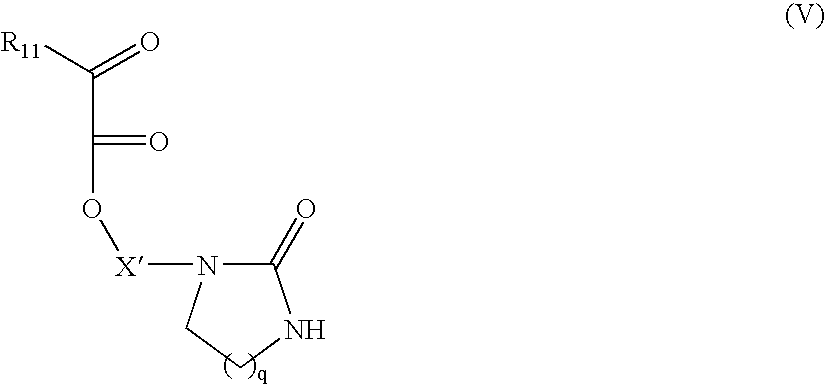Aluminum lithographic substrate and method of making
a technology of lithographic substrate and aluminum lithography, which is applied in the field of aluminum lithographic substrate and method of making, can solve the problems that the strength of the plate affects printing speed and durability, and achieve the effects of reducing the deposition of etch film, reducing the “localized blanket toning” and reducing the toning
- Summary
- Abstract
- Description
- Claims
- Application Information
AI Technical Summary
Benefits of technology
Problems solved by technology
Method used
Image
Examples
invention example 2
[0191]Similar to Invention Example 1, this example tests the high current density, but this time with use of the same graining chemistry used to prepare Substrate C1. The electrochemical graining chemistry was 1.3% hydrochloric acid and 0.50% Al3+ at 25° C. A significant improvement in general blanket toning resistance was observed for Substrate 2 using this graining chemistry as well as shown in the following TABLE V.
TABLE VCurrentChargeGeneralLocalizedSub-densityDensityRvEtchODBlanketBlanketstrate(A / dm2)(C / dm2)(μm)ActivityPlateToningToningC1408503.51Low0.360.00No2555883.24Low0.330.13No
invention examples 3 and 4
[0192]Increasing the activity of the post-graining etch to remove aluminum hydroxide etch film by-product also provided a significant improvement in general blanket toning resistance. The etch solution was increased from 18 mS / cm at 25° C. to 60 mS / cm at 35° C. while the electrochemical graining chemistry for Substrates 3 and 4 was 1.3% hydrochloric acid and 0.50% Al3+ at 25° C. Less etch film on the surface was evident when measuring the optical density of the surface with an X-Rite 508 densitometer using the visual filter. The lower optical density corresponded to less etch film on the surface, which was verified by analyzing the surface with a SEM (see SEM photos below). While the resulting printing plates are considered an improvement, the printing plate of Invention Example 4 is preferred because it exhibited a significant improvement for both general and localized blanket toning resistance as shown in the following TABLE VI.
TABLE VICurrentChargeOpticalGeneralLocalizedSub-densi...
invention example 5
[0195]This example shows the effect of lower temperature electrochemical graining or lower charge density. Individual aluminum sheets were electrochemically grained and etched under the conditions shown in the following TABLE VIII to provide Substrates A through D with the noted properties.
TABLE VIIISubstrateSubstrateSubstrateSubstrateABCDGraining:HCl (g / l)15151313Al3+ (g / l)2.02.00.50.5Temperature (° C.)18351835A / dm271716464C / dm2813813634634Etching:Etch loss (mg / m2)525525490490Surface Properties:Ra average (μm)0.510.530.500.44Ra range (μm)0.50–0.550.51–0.550.45–0.530.41–0.46Rv average (μm)3.114.273.974.47Rv range (μm)2.45–4.662.88–5.593.64–4.284.09–4.71
[0196]The change in the average Rv is seen as significant evidence that lower electrochemical graining temperature can be used to keep the pit depth below 4 μm. The acid and dissolved aluminum concentrations appear to cause a smaller effect than the lower temperature.
PUM
| Property | Measurement | Unit |
|---|---|---|
| pit depth | aaaaa | aaaaa |
| Ra | aaaaa | aaaaa |
| Ra | aaaaa | aaaaa |
Abstract
Description
Claims
Application Information
 Login to View More
Login to View More - R&D
- Intellectual Property
- Life Sciences
- Materials
- Tech Scout
- Unparalleled Data Quality
- Higher Quality Content
- 60% Fewer Hallucinations
Browse by: Latest US Patents, China's latest patents, Technical Efficacy Thesaurus, Application Domain, Technology Topic, Popular Technical Reports.
© 2025 PatSnap. All rights reserved.Legal|Privacy policy|Modern Slavery Act Transparency Statement|Sitemap|About US| Contact US: help@patsnap.com



